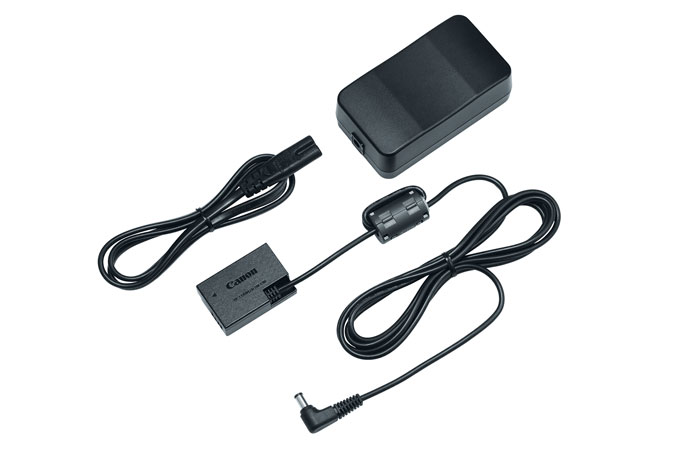Additional Camera Setup
Equipment
Beyond the basics mentioned earlier, you will benefit from two additional pieces of hardware.
- A quality tripod will allow you to place your camera at the right distance, height, and angle for your situation.
- A power adapter kit for your camera, which replaces the battery. Canon sells a compatible adapter, and there are generic adapters also available. The adapters are inserted into the camera’s battery compartment, so it’s important that you obtain a power adapter specifically for your camera model.

We have a few gear recommendations on our support site.
Camera Settings
Plan to experiment before you broadcast with the available settings on the camera to see what produces the best results for your needs. We cannot provide ideal settings in this manual because different cameras and situations call for different settings.
If you’re not well versed in the dozens of options your camera features, and you’re running a basic one-person shoot, we suggest starting with the Mode dial on Automatic and, if your camera features face-detection auto-focus, to enable that. Some Canons have a “Movie Servo AF” (auto focus) specific to video, check your manual to see if that is of use. If your lens features an Automatic/Manual Focus switch, select Automatic (often labeled “AF”). Enable the Grid feature on your LCD to help compose your shot with the Rule of Thirds, and to make sure your shot is level.
It is quite possible these are not the best settings for your situation. If you do not have someone running the camera for you during your broadcast, pay special attention to the auto-focus options. In some situations, auto focus will move frequently and this could cause distracting changes to your video’s appearance.
Along with the auto-focus, exposure is another concern. Exposure affects how bright or dark your video will be. If you have a good artificial light source that doesn’t fluctuate (natural light is great, but can vary with clouds), you can find a good exposure setting for your shoot, and use exposure lock to prevent it from changing. When the camera auto-focuses, it will often adjust the exposure settings at the same time, if those settings are not locked.
Many of the camera’s shooting settings affect one another. Canon’s manuals often provide an overview how to shoot in various situations.
Before we end this section on leveling up, one more reminder to not ignore your audio. Invest in a good microphone solution, and remember mic audio is not available through your camera when using a USB connection.
If you don’t yet have a DSLR
Cameras with interchangeable lenses, like Canon’s DSLRs, can produce the best video out there. If you’ve been shooting with webcams, these camera provide a serious upgrade to your broadcast quality.
While Canon DSLRs can be pricey, consider a model from a year or two ago, as they are typically much more affordable than the latest edition.
Another option you may want to investigate if you have not yet invested in a camera, or are looking to upgrade, is camera and lens rentals. Most cities with pro photo stores have options to rent, and there are now many online options as well, including LensRentals.com, which rent cameras, lenses, and even packages, including video-specific packages.
For a fraction of the purchase price, you can experiment with equipment for a week and see if it works well in your particular situation. If you have the budget for that, it’s worth far more than all the gear reviews you can find. Additionally, if you like the equipment, many rental places allow you to then purchase equipment they rented you, and they often sell refurbished equipment they previously rented. This is a good way to get good equipment at a discount.
